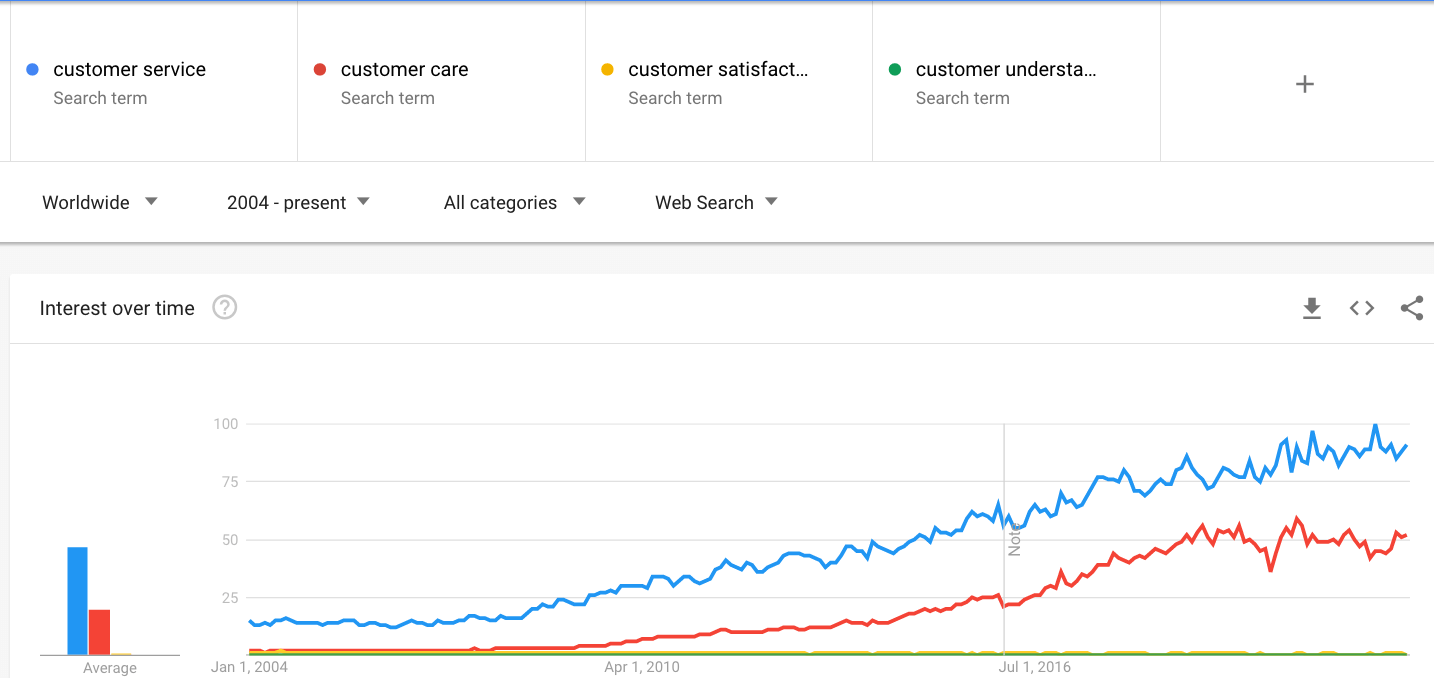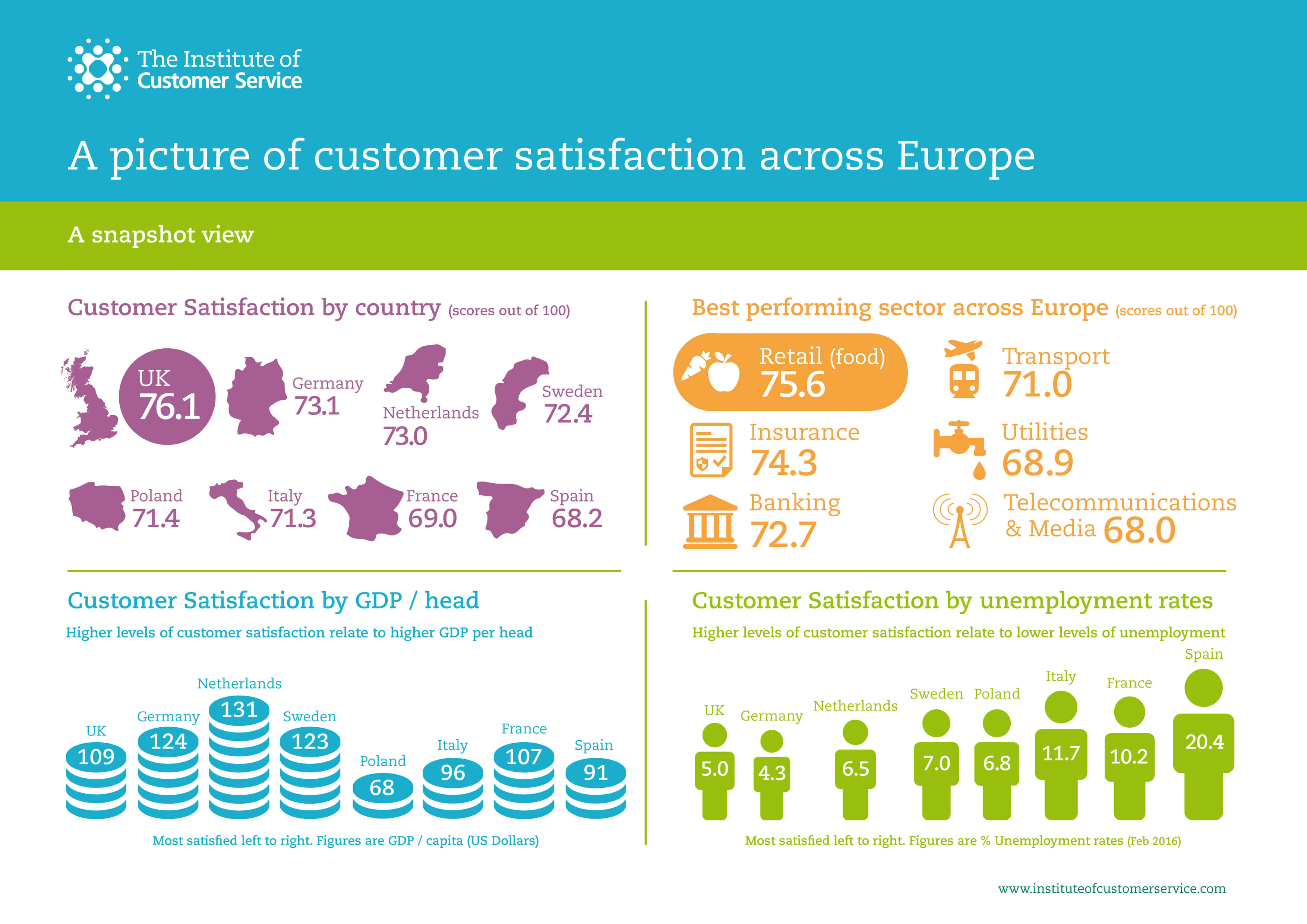As a dedicated customer centricity champion, just like you, I spend a lot of my time researching what customers want, just like you do too, I hope. In this period of great global unrest, understanding our customers has become more important than ever before.
Just a few short months ago, I didn’t think that it would be possible for customer-centricity to become any more important. But things change and now everyone is fighting to keep their businesses afloat. So the new and constantly altering needs and desires of our customers should be a top priority for all of us to follow.
To help me keep abreast of the changes, I’m regularly checking online searches for such terms as customer service, customer satisfaction and customer care. Google and Bing have become some of my best friends!
A couple of years ago, I came across some surprising facts, which prompted this post when I first drafted it. But with the incredibly unforeseen events of the past few years, I feel it deserves a update.
Already at the time, my analysis suggested a serious problem in the business of looking after our customers. Today it is clear that any organisation that hasn’t spent time putting things right, will most certainly be suffering in this post-pandemic, global unrest in which companies are trying to do business. I’d be interested to hear your own thoughts once you have read the article.
Customer Centricity
Wikipedia, another of my faithful friends, doesn’t have a definition for customer centricity! If you look up the term, you get directed to customer satisfaction! Unbelievable. Try it for yourself and see!
Gartner defines customer centricity as:
“The ability of people in an organisation to understand customers’ situations, perceptions, and expectations.”
It then goes on to say:
“Customer centricity demands that the customer is the focal point of all decisions related to delivering products, services and experiences to create customer satisfaction, loyalty and advocacy.”
What I particularly like about this definition, is that it refers to customer understanding and the need for customers to be the focus of decision-making. It also highlights the need to create not just customer satisfaction, but loyalty and advocacy too.
Now whereas it seems to be difficult to build longterm loyalty these days, especially in B2C businesses, advocacy is essential in today’s connected world. Of course the latter means that customers are surprised and delighted rather than just satisfied, so that they are excited to share their positive experiences with others.
Need help in adopting a customer-first strategy?
Check out our Brand Accelerator™ Course in the C3Centricity Academy
Aim for Advocacy Rather than Loyalty
As we all know, it costs between 5 and 25 times more to acquire a new customer as it does to retain existing ones. (Invesp) Therefore strong loyalty is a valuable benefit for a brand. But covid saw us all changing our purchasing behaviours, as we researched, compared and then bought more online. So although loyalty is difficult, it is not impossible to achieve and luckily advocacy demands the same positive experiences that once led to customer loyalty. So we should be aiming for improved customer service and experiences.
Of course, what customers are looking for in a company has also changed dramatically. They now expect organisations to provide more than just their products and services. They expect them to care for their employees as well as the communities in which they do business.
Customer Experience is the New Differentiator
Retailers will need to review their bricks-and-mortar strategy as customers continue to order more online than the pre-pandemic era. McKinsey’s article on this topic “Adapting customer experience in the time of coronavirus” makes a good complement to this post.
Do you fix your prices to Amazon if a customer shows interest in buying something but hesitates purchasing in store? Many retail chains do this, especially in durables.
Another important consideration is making the customer’s experience as seamless as possible as their journey takes them r=from online to offline and back.
The experience you provide your customers is the main – dare I say the only? – way to differentiate yourself today. In so many industries product performance and services have become almost indistinguishable.
It has been shown that customers are willing to pay more for excellent customer service. Yes MORE for exactly the same product or service, so what are you waiting for? You can read a summary of the American Express research that was recently updated HERE.
In the post-covid reset, differentiation is going to move from products alone to increased service and care. As already mentioned, customers expect brands to support them in such hard times, but also their employees and communities. Companies who cut jobs and/or salaries while their board members take bonuses will be shunned.
What customers wanted until recently was a seamless experience from pre- to post-purchase, both on and offline. But with increased out-of-stock in physical stores and more purchases being made online, customers now want companies to support them and deliver an even better experience and service. This is definitely not the time to cut customer care departments if your organisation is looking to reduce costs!
The Importance of Customer Satisfaction & Understanding
There is no denying that customer-centricity is important, no vital to growth and profitability. However some companies are (too?) hesitant to adopt best practices in this area, which concerns me for a number of reasons:
1. Changes are happening too slowly in most organisations. If it is important for business, then what is stopping companies from adopting a more customer centric approach? The longer they wait, the more they risk being beaten by a more customer-friendly competitor. And this is why so many start-ups are stealing significant share from the major brands. They are super-focused on their customer.
2. Feelings are more important than fact. It’s also no longer (just) about product and service performance. It’s about how the customer feels about your brand. Niche brands and start-ups understand this better than anyone. And the pandemic further accentuated the importance of feelings and emotions. Many of us have become over-sensitive, even depressed, after months of lockdown and trying to follow the ongoing, constantly changing regulations. We want to feel good about our decisions and expect brands to play an active role in making our lives better.
Customers have had to become more flexible in their response to constant out-of-stock situations for many categories and brands. However, there is a real danger that once they have accepted to buy a replacement brand, they may then question the need to return to the brand to which that had been previously loyal. I expect to see a lot of brand switching over the remainder of this year as a direct consequence of these forced behavioural changes.
And as if all this is not already difficult enough for businesses to cope with, the increased level of layoffs and furloughs, are forcing customers to reconsider their spending, and think about cheaper alternatives that they may never have previously considered.
3. Customers are complaining – a lot – about the way they are being treated. Why are companies not accepting these criticisms as the gifts they truly are? Acting promptly before an issue becomes yet one more social media overnight viral sensation is essential today. Do it right and your complainers may even turn into advocates if they are delighted with the outcome.
Complaints are also wonderful (free) sources of innovation and renovation ideas. Find out what your customers are unhappy about and then propose a solution. You may even be able to charge more for it, since the new offer will better meet their needs.
4. Customer service is still being confused with customer satisfaction. Companies are happy when their customers say they are satisfied, but that is no longer enough – if it ever was!
All businesses should be looking to surprise and delight their customers! After months of lockdown, customers have a short fuse and react more strongly when dissatisfied with a company or brand. We need to respond faster and more completely to demands, comments and complaints. Find more inspiring ideas on how to respond to customers in this great article entitled “The Revolutionary Marketing Challenge is Not Customer Satisfaction.”
The Future of Customer Service
As mentioned above, the research that prompted this post was a Google keyword investigation of terms related to customers. Having seen the strong positive trend for the word customer, I then wanted to understand what it was about customers that was of interest to those searching online.
I found that both customer service and customer care showed almost identical positive trends, although the latter has flattened in the past couple of years. However, when I looked at customer satisfaction and customer understanding the trends were flat and worse, minimal. (You can see the trend graph below)

These trends suggest that companies search for how to improve their customer services and care centres, but not about how to understand their customers better or increase their satisfaction!
How can this be? Surely an interest in customer services should come from an increased understanding of how to deliver customer satisfaction? Well apparently not, at least for most companies! They seem to be more worried about the technical side of the process of responding to their customers efficiently, rather than taking the customer’s perspective on what should be delivered.
This is when I realised that perhaps businesses are more interested in the cost of providing the service than in the real benefit of customer connection. That is a serious flaw in their thinking in my opinion. Do you agree? Whether you do or don’t, please leave me a comment below. This is too important a topic not to continue the discussion.
To confirm my hypothesis, I looked into the trends for customer satisfaction levels around the world. After all, many more companies are interested in customer service these days, aren’t they? So you would think it should have a positive impact on customer satisfaction.
According to the most recent report from The Institute of Customer Service on customer satisfaction across Europe, retail, insurance and banking are the three best-performing industries. This was a surprise to me because they used to be the most heavily criticised!
However, this suggests that they have taken action, albeit because they had little choice, and are now leading the pack. But most other industries continue to ignore what their customers want. You can see the full Infographic overview below; click on it to see the full-sized original.

Unfortunately, as would be expected, all the more recent statistics available are from surveys conducted pre-covid, so I decided not to include them until we have a better grip on the impact the pandemic has had on people.
I then went back to Google to search for any ways that were suggested for increasing customer satisfaction. I found over 133 million articles on how to do it, but very few on the results of doing it. While this is certainly a significant increase on the measly two million I found five years ago and the less than one million articles available just a couple of years ago, it is still extremely worrying.
The increased interest in customer satisfaction is certainly coming from a steady decrease in satisfaction levels over the past couple of years – long before covid struck. The latest results of the US ACSI (American Customer Satisfaction Index) report shows customer satisfaction has been declining since mid-2018 and is now at a level last seen almost a decade ago! With behaviours changing radically during the pandemic, I will be watching with interest how the increase in online ordering and the decline in retail outlet shopping will impact these levels.
 It has been proven that changes in customer satisfaction are a predictor of future consumer spending. So it looks like we are not out of the woods yet, nor will be this year, if not next year as well.
It has been proven that changes in customer satisfaction are a predictor of future consumer spending. So it looks like we are not out of the woods yet, nor will be this year, if not next year as well.
David VanAmburg, who is Managing Director at ACSI once said:
“Customer satisfaction will need to increase for the economy to grow at a faster pace. It’s tough to pinpoint one cause of the stagnation, but unless it budges, the national ACSI score paints a dire picture for consumer spending growth.”
Key Takeaways About What Customers Want
So what does a business need to do to deliver what their customers really want today and increase their satisfaction? There are seven facts that become apparent from this analysis:
- Businesses should always provide positive customer experience and do whatever it takes to not only satisfy but ideally delight their customers. With frustration and lockdowns impacting the emotional stability of many, people are likely to react extremely positively to the slightest thing that goes beyond their expectation at the moment. Take advantage of this opportunity to solidify your brand’s reputation and that of your company too.
- Companies need to go beyond the mere technical process of customer-centricity, to truly put their customers at the heart of the organisation. This means adopting a customer-first strategy of course, but also responding to the increase in contacts resulting from customers staying and purchasing at home. This is not the time to cut costs in the area of customer services, but to invest extensively to respond more quickly to requests for help from their house-bound customers. Read “What a Customer First Strategy Is (And what it’s not!)” for more on this topic.
- Customer centricity adds demonstrated value to a company; it should be a no-brainer for every single business, whatever the industry, to adopt a customer-first strategy. And as previously mentioned, now that layoffs and furloughs have become the norm, it is vital that customer services remain at the heart of the business and are even expanded if customer connections increase – which they no doubt will in almost every consumer-facing industry.
- Customer centric improvements are happening too slowly in most companies, especially when customers are becoming ever more demanding and verbose when dissatisfied. Frustrated customers stuck at home these days, are reacting even more quickly and negatively to being ignored or kept waiting at the end of the line when they call an organisation. After all, they have nothing much to do at home, so will concentrate on getting answers to their questions and complaints. This is confirmed by Matt Wujciak in his analysis “Global Contact Center Trends During COVID-19 Pandemonium.”
‘..the contact centre is experiencing an unprecedented increase in overall call volume, with a particular surge in aggressive (if not fanatic) customer inquiries.”
- Providing customer service doesn’t guarantee customer satisfaction. Responding to customers in a timely manner has become the table stakes for competing in most if not all B2C industries. And yet investment has not been increasing at the same level as the demand from customers. This has to change.
- Positive customer experience always increases loyalty and advocacy. It has been shown that a totally satisfied customer contributes 2.6 times as much revenue as a somewhat satisfied customer and 14 times as much revenue as a somewhat dissatisfied customer. Read “5 Reasons why customer experience is the pulse of every business right now” for more on this.
- Excellent customer service enables differentiation and even higher prices. Perhaps now is not the moment to increase prices for your over-sensitive customers, but it is definitely the time to excel at providing the best possible service.
In summary, in this post-covid era, people want businesses to listen and understand them. When a customer takes the time to contact a company because they are unhappy, or even just for information, they expect a satisfactory outcome as a minimum. Those organisations who go beyond, to deliver surprise and delight, will see their reputations improve, as well as an increase in their customers’ loyalty and advocacy.
Customers also want companies to be more open, honest and transparent. They have a right to know the source of ingredients, the ingredients themselves, the country of origin, the charities the company supports, or the organisation’s policies on waste, water and sustainability.
One additional demand has surfaced this year, that for companies to protect their employees, to reduce layoffs, protect salaries and for management to show that they are adapting their own situations to match what their employees are going through. No bonuses or golden parachutes, when those below them are being furloughed or worse.
So how are you doing? Are you living up to your customers’ expectations? Are you delivering what your customers really want? How have you made progress in this area, especially in the last six months? Please share your (success) stories below.
You know you can no longer wait; you’re getting left behind by those organisations – and competitors – who are taking action today! Take the FREE C3C Evaluator™ quiz and find out exactly where your greatest opportunities for improvement lie.
And for more ideas on how you can understand what your customers really want today, why not organise one of our 1-Day Catalyst Training Sessions? We have them on many areas of customer understanding and service, so you are sure to find exactly what you need to inspire and energise your team. Check out and download our brochures. And yes they can be run online as well as in person.
If you would rather talk through your specific needs first, so we can personalise our support for you and your team, then feel free to contact me. It would be a pleasure to help you in these daunting times.
This post is an update of one that was first published on C3Centricity in 2018.












